Shiyu Chang
Rethinking the Text-Vision Reasoning Imbalance in MLLMs through the Lens of Training Recipes
Oct 26, 2025Abstract:Multimodal large language models (MLLMs) have demonstrated strong capabilities on vision-and-language tasks. However, recent findings reveal an imbalance in their reasoning capabilities across visual and textual modalities. Specifically, current MLLMs often over-rely on textual cues while under-attending to visual content, resulting in suboptimal performance on tasks that require genuine visual reasoning. We refer to this phenomenon as the \textit{modality gap}, defined as the performance disparity between text-centric and vision-centric inputs. In this paper, we analyze the modality gap through the lens of training recipes. We first show that existing training recipes tend to amplify this gap. Then, we systematically explore strategies to bridge it from two complementary perspectives: data and loss design. Our findings provide insights into developing training recipes that mitigate the modality gap and promote more balanced multimodal reasoning. Our code is publicly available at https://github.com/UCSB-NLP-Chang/Bridging-Modality-Gap.
A Hierarchical Probabilistic Framework for Incremental Knowledge Tracing in Classroom Settings
Jun 11, 2025Abstract:Knowledge tracing (KT) aims to estimate a student's evolving knowledge state and predict their performance on new exercises based on performance history. Many realistic classroom settings for KT are typically low-resource in data and require online updates as students' exercise history grows, which creates significant challenges for existing KT approaches. To restore strong performance under low-resource conditions, we revisit the hierarchical knowledge concept (KC) information, which is typically available in many classroom settings and can provide strong prior when data are sparse. We therefore propose Knowledge-Tree-based Knowledge Tracing (KT$^2$), a probabilistic KT framework that models student understanding over a tree-structured hierarchy of knowledge concepts using a Hidden Markov Tree Model. KT$^2$ estimates student mastery via an EM algorithm and supports personalized prediction through an incremental update mechanism as new responses arrive. Our experiments show that KT$^2$ consistently outperforms strong baselines in realistic online, low-resource settings.
Collision- and Reachability-Aware Multi-Robot Control with Grounded LLM Planners
May 26, 2025Abstract:Large language models (LLMs) have demonstrated strong performance in various robot control tasks. However, their deployment in real-world applications remains constrained. Even state-ofthe-art LLMs, such as GPT-o4mini, frequently produce invalid action plans that violate physical constraints, such as directing a robot to an unreachable location or causing collisions between robots. This issue primarily arises from a lack of awareness of these physical constraints during the reasoning process. To address this issue, we propose a novel framework that integrates reinforcement learning with verifiable rewards (RLVR) to incentivize knowledge of physical constraints into LLMs to induce constraints-aware reasoning during plan generation. In this approach, only valid action plans that successfully complete a control task receive positive rewards. We applied our method to two small-scale LLMs: a non-reasoning Qwen2.5-3B-Instruct and a reasoning Qwen3-4B. The experiment results demonstrate that constraint-aware small LLMs largely outperform large-scale models without constraints, grounded on both the BoxNet task and a newly developed BoxNet3D environment built using MuJoCo. This work highlights the effectiveness of grounding even small LLMs with physical constraints to enable scalable and efficient multi-robot control in complex, physically constrained environments.
Defending LLM Watermarking Against Spoofing Attacks with Contrastive Representation Learning
Apr 10, 2025Abstract:Watermarking has emerged as a promising technique for detecting texts generated by LLMs. Current research has primarily focused on three design criteria: high quality of the watermarked text, high detectability, and robustness against removal attack. However, the security against spoofing attacks remains relatively understudied. For example, a piggyback attack can maliciously alter the meaning of watermarked text-transforming it into hate speech-while preserving the original watermark, thereby damaging the reputation of the LLM provider. We identify two core challenges that make defending against spoofing difficult: (1) the need for watermarks to be both sensitive to semantic-distorting changes and insensitive to semantic-preserving edits, and (2) the contradiction between the need to detect global semantic shifts and the local, auto-regressive nature of most watermarking schemes. To address these challenges, we propose a semantic-aware watermarking algorithm that post-hoc embeds watermarks into a given target text while preserving its original meaning. Our method introduces a semantic mapping model, which guides the generation of a green-red token list, contrastively trained to be sensitive to semantic-distorting changes and insensitive to semantic-preserving changes. Experiments on two standard benchmarks demonstrate strong robustness against removal attacks and security against spoofing attacks, including sentiment reversal and toxic content insertion, while maintaining high watermark detectability. Our approach offers a significant step toward more secure and semantically aware watermarking for LLMs. Our code is available at https://github.com/UCSB-NLP-Chang/contrastive-watermark.
ThinkPrune: Pruning Long Chain-of-Thought of LLMs via Reinforcement Learning
Apr 02, 2025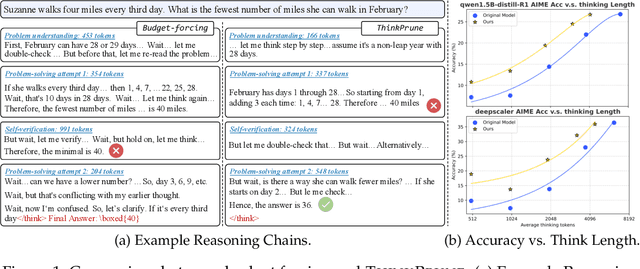
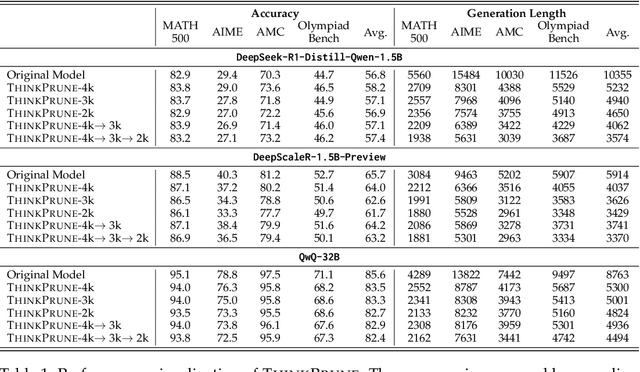
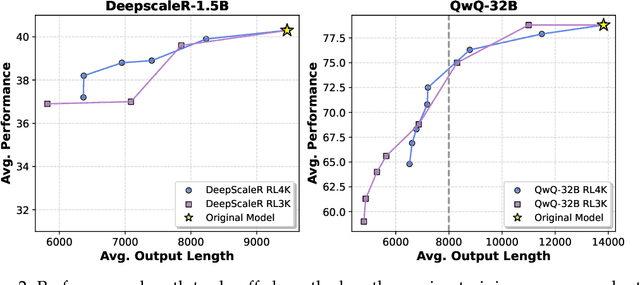
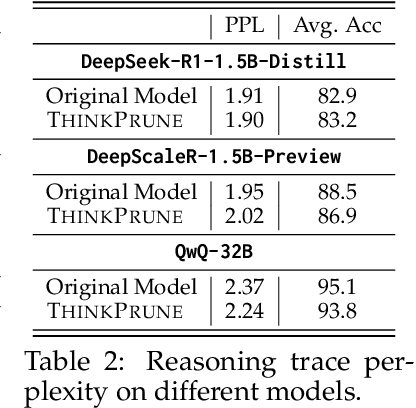
Abstract:We present ThinkPrune, a simple yet effective method for pruning the thinking length for long-thinking LLMs, which has been found to often produce inefficient and redundant thinking processes. Existing preliminary explorations of reducing thinking length primarily focus on forcing the thinking process to early exit, rather than adapting the LLM to optimize and consolidate the thinking process, and therefore the length-performance tradeoff observed so far is sub-optimal. To fill this gap, ThinkPrune offers a simple solution that continuously trains the long-thinking LLMs via reinforcement learning (RL) with an added token limit, beyond which any unfinished thoughts and answers will be discarded, resulting in a zero reward. To further preserve model performance, we introduce an iterative length pruning approach, where multiple rounds of RL are conducted, each with an increasingly more stringent token limit. We observed that ThinkPrune results in a remarkable performance-length tradeoff -- on the AIME24 dataset, the reasoning length of DeepSeek-R1-Distill-Qwen-1.5B can be reduced by half with only 2% drop in performance. We also observed that after pruning, the LLMs can bypass unnecessary steps while keeping the core reasoning process complete. Code is available at https://github.com/UCSB-NLP-Chang/ThinkPrune.
KVLink: Accelerating Large Language Models via Efficient KV Cache Reuse
Feb 21, 2025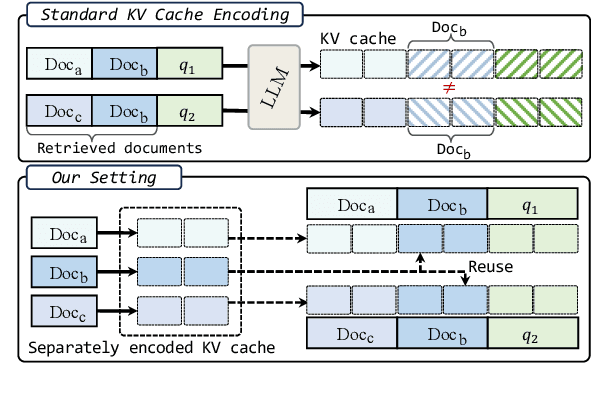
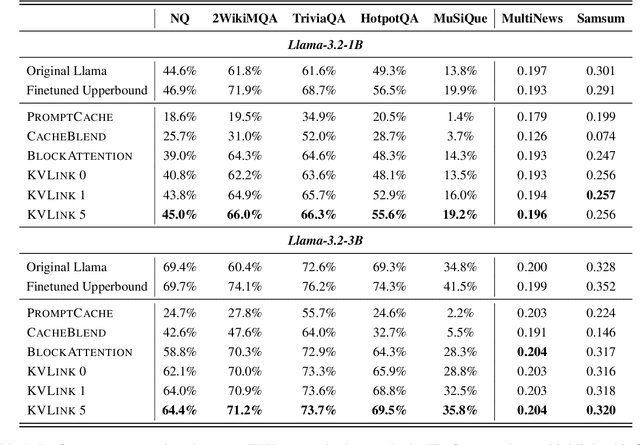
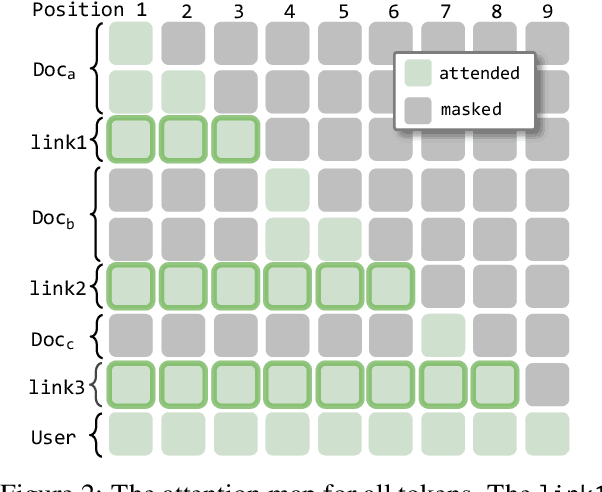
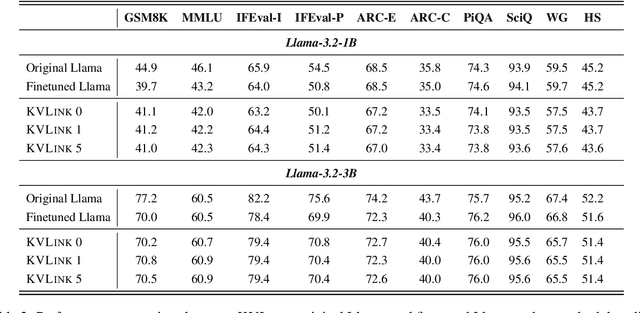
Abstract:We describe KVLink, an approach for efficient key-value (KV) cache reuse in large language models (LLMs). In many LLM applications, different inputs can share overlapping context, such as the same retrieved document appearing in multiple queries. However, the LLMs still need to encode the entire context for each query, leading to redundant computation. In this paper, we propose a new strategy to eliminate such inefficiency, where the KV cache of each document is precomputed independently. During inference, the KV caches of retrieved documents are concatenated, allowing the model to reuse cached representations instead of recomputing them. To mitigate the performance degradation of LLMs when using KV caches computed independently for each document, KVLink introduces three key components: adjusting positional embeddings of the KV cache at inference to match the global position after concatenation, using trainable special tokens to restore self-attention across independently encoded documents, and applying mixed-data fine-tuning to enhance performance while preserving the model's original capabilities. Experiments across 7 datasets demonstrate that KVLink improves question answering accuracy by an average of 4% over state-of-the-art methods. Furthermore, by leveraging precomputed KV caches, our approach reduces time-to-first-token by up to 90% compared to standard LLM inference, making it a scalable and efficient solution for context reuse.
Instruction-Following Pruning for Large Language Models
Jan 07, 2025



Abstract:With the rapid scaling of large language models (LLMs), structured pruning has become a widely used technique to learn efficient, smaller models from larger ones, delivering superior performance compared to training similarly sized models from scratch. In this paper, we move beyond the traditional static pruning approach of determining a fixed pruning mask for a model, and propose a dynamic approach to structured pruning. In our method, the pruning mask is input-dependent and adapts dynamically based on the information described in a user instruction. Our approach, termed "instruction-following pruning", introduces a sparse mask predictor that takes the user instruction as input and dynamically selects the most relevant model parameters for the given task. To identify and activate effective parameters, we jointly optimize the sparse mask predictor and the LLM, leveraging both instruction-following data and the pre-training corpus. Experimental results demonstrate the effectiveness of our approach on a wide range of evaluation benchmarks. For example, our 3B activated model improves over the 3B dense model by 5-8 points of absolute margin on domains such as math and coding, and rivals the performance of a 9B model.
Fictitious Synthetic Data Can Improve LLM Factuality via Prerequisite Learning
Oct 25, 2024Abstract:Recent studies have identified one aggravating factor of LLM hallucinations as the knowledge inconsistency between pre-training and fine-tuning, where unfamiliar fine-tuning data mislead the LLM to fabricate plausible but wrong outputs. In this paper, we propose a novel fine-tuning strategy called Prereq-Tune to address this knowledge inconsistency and reduce hallucinations. Fundamentally, Prereq-Tune disentangles the learning of skills and knowledge, so the model learns only the task skills without being impacted by the knowledge inconsistency. To achieve this, Prereq-Tune introduces an additional prerequisite learning stage to learn the necessary knowledge for SFT, allowing subsequent SFT to focus only on task skills. Prereq-Tune can also be combined with fictitious synthetic data to enhance the grounding of LLM outputs to their internal knowledge. Experiments show that Prereq-Tune outperforms existing baselines in improving LLM's factuality across short QA and long-form generation tasks. It also opens new possibilities for knowledge-controlled generation in LLMs. Our code is available at https://github.com/UCSB-NLP-Chang/Prereq_tune.git.
Revisiting Who's Harry Potter: Towards Targeted Unlearning from a Causal Intervention Perspective
Jul 24, 2024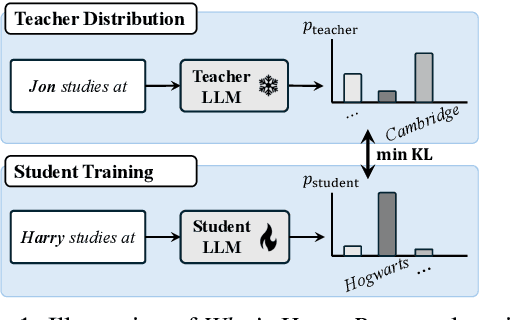
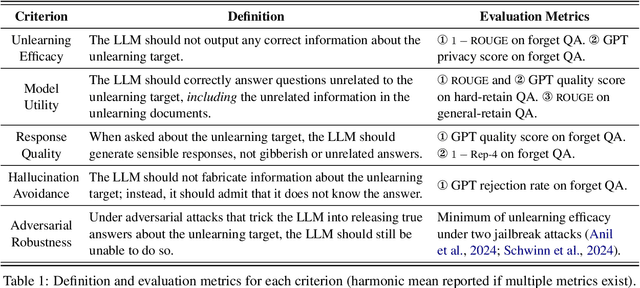
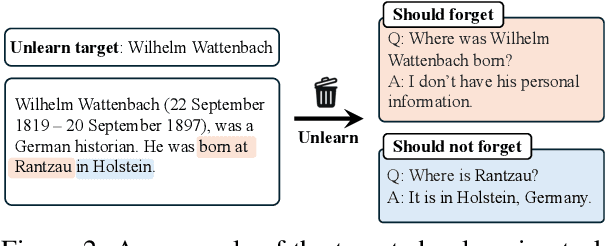
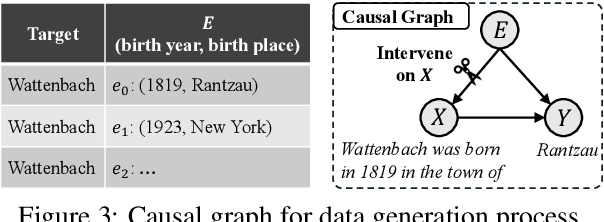
Abstract:This paper investigates Who's Harry Potter (WHP), a pioneering yet insufficiently understood method for LLM unlearning. We explore it in two steps. First, we introduce a new task of LLM targeted unlearning, where given an unlearning target (e.g., a person) and some unlearning documents, we aim to unlearn only the information about the target, rather than everything in the unlearning documents. We further argue that a successful unlearning should satisfy criteria such as not outputting gibberish, not fabricating facts about the unlearning target, and not releasing factual information under jailbreak attacks. Second, we construct a causal intervention framework for targeted unlearning, where the knowledge of the unlearning target is modeled as a confounder between LLM input and output, and the unlearning process as a deconfounding process. This framework justifies and extends WHP, deriving a simple unlearning algorithm that includes WHP as a special case. Experiments on existing and new datasets show that our approach, without explicitly optimizing for the aforementioned criteria, achieves competitive performance in all of them. Our code is available at https://github.com/UCSB-NLP-Chang/causal_unlearn.git.
VSP: Assessing the dual challenges of perception and reasoning in spatial planning tasks for VLMs
Jul 02, 2024



Abstract:Vision language models (VLMs) are an exciting emerging class of language models (LMs) that have merged classic LM capabilities with those of image processing systems. However, the ways that these capabilities combine are not always intuitive and warrant direct investigation. One understudied capability in VLMs is visual spatial planning -- the ability to comprehend the spatial arrangements of objects and devise action plans to achieve desired outcomes in visual scenes. In our study, we introduce VSP, a benchmark that 1) evaluates the spatial planning capability in these models in general, and 2) breaks down the visual planning task into finer-grained sub-tasks, including perception and reasoning, and measure the LMs capabilities in these sub-tasks. Our evaluation shows that both open-source and private VLMs fail to generate effective plans for even simple spatial planning tasks. Evaluations on the fine-grained analytical tasks further reveal fundamental deficiencies in the models' visual perception and bottlenecks in reasoning abilities, explaining their worse performance in the general spatial planning tasks. Our work illuminates future directions for improving VLMs' abilities in spatial planning. Our benchmark is publicly available at https://github.com/UCSB-NLP-Chang/Visual-Spatial-Planning.
 Add to Chrome
Add to Chrome Add to Firefox
Add to Firefox Add to Edge
Add to Edge